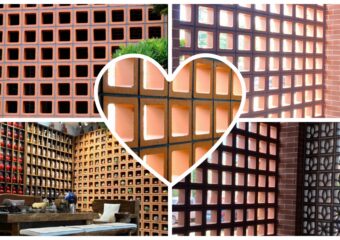
Terracotta Screen Block: Rediscovering Ventilation and Light from a Designer’s Perspective
Discover how Terracotta Jali blocks, with their intricate patterns and hollow structure, allow for effective modulation of light and air, creating an immersive architectural experience.
Terracotta Screen Block: Rediscovering Ventilation and Light from a Designer’s Perspective introduction:
In this exploration of Terracotta Screen Block from a designer’s perspective, we delve into the aesthetic and functional benefits of these traditional architectural elements. Discover how Terracotta Jali blocks, with their intricate patterns and hollow structure, allow for effective modulation of light and air, creating an immersive architectural experience. Learn about their versatility in design, environmental benefits, and tips for their integration into modern designs. Embrace these timeless elements and transform your architectural projects from ordinary to extraordinary.
- Introduction
For centuries, humans have endeavored to merge aesthetic appeal and functionality in architecture. One such example of this harmonious blend is the Terracotta Jali blocks. These intricately designed blocks, steeped in history, have continued to provide architects with a tool that enhances both the exterior facade and the interior environment of structures. In this article, we will embark on a journey to rediscover Terracotta Screen Block and their versatility in creating a marriage between light, ventilation, and beauty.
- The Aesthetics and Functionality of Terracotta Screen Block
At first glance, Terracotta Screen Block (also known as Clay Hollow Window Brick Tile) might appear to be merely decorative. However, these units offer a unique aesthetic appeal while serving several crucial functions. The geometrically intricate patterns found on these blocks are not merely for show; they play a significant role in modulating light and air in buildings, thus contributing to an immersive architectural experience.
Moreover, Terracotta Jali blocks offer the added advantage of passive cooling, making them an excellent choice for tropical climates. The hollow structure of these blocks, often in the form of Red Terracotta Jali, Blue-gray Terracotta Jali, or White Terracotta Jali, allows for the circulation of air, effectively reducing the heat and promoting natural ventilation. At night, the perforated design allows interior lights to filter through, transforming the building into a glowing lantern.
III. The Versatility of Terracotta Screen Block in Design
Terracotta Screen Block exhibit an impressive degree of versatility. They are not only applicable as exterior decor but also find significant usage within interior spaces. Their function isn’t limited to walls – they can serve as captivating partitions between rooms, allowing for a subtle yet effective demarcation of space.
For instance, Crimson Terracotta Screen Block can be used as separators between the living room and dining area, providing distinctiveness while maintaining a cohesive atmosphere. Furthermore, Colored Terracotta Jali blocks, with their diverse patterns, can be strategically placed to create interplays of light and shadow, adding an artistic touch to the interior design.
- The Environmental Benefits of Using Terracotta Screen Block
In this era of increasing awareness about sustainability, Terracotta Jali blocks stand as a testament to environmentally friendly architecture. The blocks, primarily made of clay, promote energy efficiency by providing passive ventilation and cooling, thus reducing dependence on artificial cooling systems. This not only cuts down energy consumption but also contributes to a reduction in the carbon footprint of the building.
- Tips for Integrating Terracotta Screen Block in Your Designs
Integrating Terracotta Screen Block into your design can be an exciting venture. Here are a few tips:
- Color Selection: Terracotta Screen Block come in a variety of colors. Choose colors that align with your design concept to create a visually pleasing environment.
- Positioning: The placement of these blocks can affect the distribution of light and the ventilation in a room. Consider the path of sunlight and airflow when deciding where to install these blocks.
- Maintenance: Though Terracotta Jali blocks are durable, they need regular maintenance to preserve their charm. A periodic wipe-down to remove dust and grime can keep them looking their best.
- Conclusion
Terracotta Screen Block are a testament to the genius of traditional architectural practices that blend aesthetics with functionality. As we step into the future of architecture, let us embrace these timeless elements, let’s adapt and integrate them into our modern designs. Let’s create spaces that are visually appealing, functionally sound, and resonate with the principles of sustainability.
So, as you envision your next architectural project, consider the charm, practicality, and environmental benefits that Terracotta Jali blocks offer. They are more than just building materials; they are the link between the past and the future, bridging the gap with their sustainable design and aesthetic appeal. Experience the transformation these blocks can bring to your design – a transformation from ordinary to extraordinary!
In conclusion, if the potential of these products piques your interest, we recommend getting in touch with LOPO Terracotta Corporation, a professional supplier of architectural terracotta products based in China. They offer an extensive range of high-quality Terracotta Jali Blocks, Terracotta Screen Blocks, Clay Hollow Window Bricks Tiles, and Terracotta Hollow Window Block Bricks Tiles. Embrace this architectural innovation and redefine your spaces with LOPO Terracotta.






